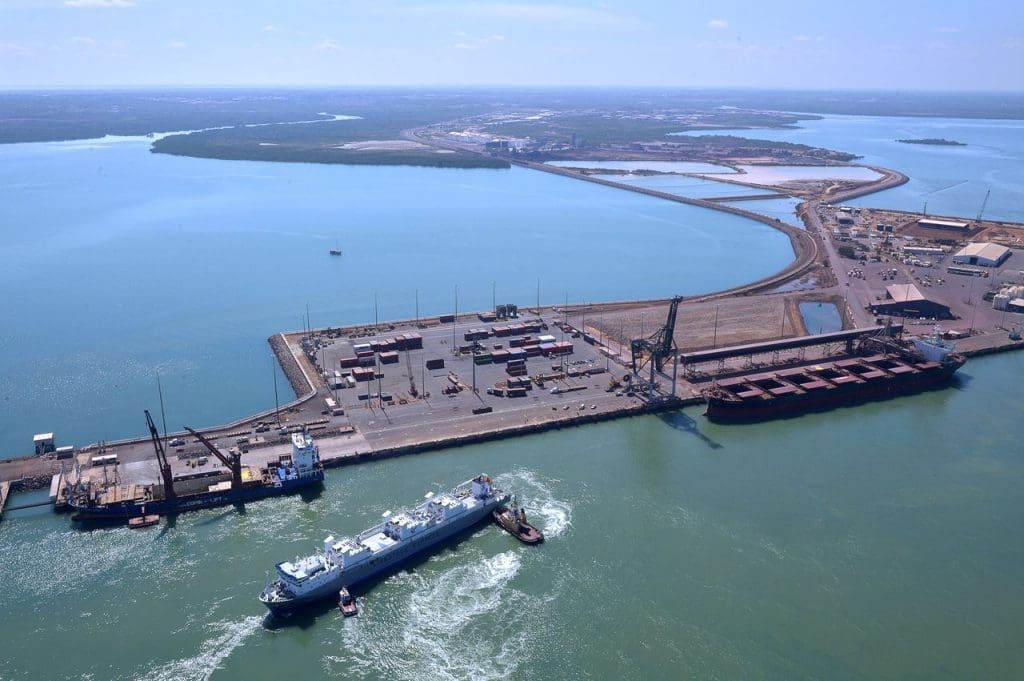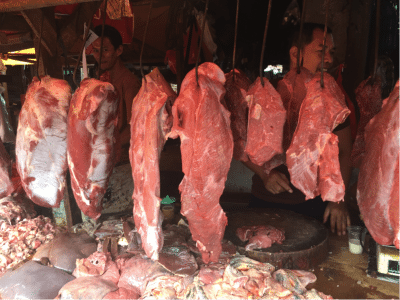Key points:
- May prices regain settling around $3/kg range
- Indo feedlot survey highlights slower demand for cattle and beef
- Return of Indian Buffalo Meat will be a test for post-Ramadan market
THE Darwin live export price has regained ground to settle around the $3/kg mark after the recent short-lived drop to a two-year low of $2.60kg amid panic selling in late April.
Cattle loaded onto ships last week were purchased for an average price of around $2.90/kg, but offers of $3/kg to $3.10/kg are now said to be available to secure cattle for the end of this month, according to trade feedback.
Prices are being supported by added competition from restockers further south for the northern live export supply herd.
Consolidated Pastoral Company CEO Troy Setter noted in an MLA webinar that dry conditions over the past two years have depleted herds in the NT by 20pc, in Queensland by 20-25pc and WA Kimberley by 10-20pc.
Solid herd rebuilding in Queensland and Southern Australia has started to put upward price pressure on heifers and cows while producers who have grass and capital are growing steers to heavier sale weights or waiting for prices to increase, adding to restrictions on available supply.
Southern restockers are paying $3 plus for Brahman heifers in central Queensland, well above the $2.50 price available in Darwin and the 30c freight differential, resulting in a resulting in a southern pull of cattle rather than the traditional northern pull at this time of year, CPC observed.
Southern meat processors are also competing strongly in the Kimberley, Katherine and North Queensland against live exporters for heavy feeders and slaughter cattle (as discussed in this April 27 Beef Central article).
MLA’s national indicators show prices for feeder steers in Southern Australia have risen from 336c/kg liveweight to 358c/kg in the past week and yearling steers from 343 to 351c, adding to the southern pull on northern steers.
While Vietnam typically prefers heavier cattle than Indonesia, due to the tight supply of these cattle it is also starting to buy Indonesian feeder weight cattle.
Supply price and demand price yet to align
On the demand side however live export and some boxed beef markets are facing challenges.
Mr Setter also noted the “supply price for cattle and demand price for meat is yet to align in many markets”.
Feedback from the Indonesia-Australia Red Meat Partnership included the results of a survey recently undertaken of lot feeders in Indonesia.
Survey findings presented by David Goodwins included:
– Demand for offal has decreased significantly. Offal such as intestines are in oversupply and prices have dropped by over 50 percent. These are normally purchased by street vendors.
– Purchasing has shifted from wet markets/traditional markets to supermarkets. The wet market/supermarket ratio was 70:30 but is currently 50:50.
– There has been a 300pc increase in online sales but this is coming from a relatively low base. This can be expected to continue in the short to medium term.
– If the situation continues it is likely the purchasing power of consumers will decline overall due to worsening economic conditions and consumers will become more price sensitive.
– The declining value of the rupiah against the US dollar is also a factor.
– Current overall feedlot capacity in Indonesia is estimated to be about 70pc full, with feedlots carrying around 190,000 head.
– Feedlots and abattoirs have experienced a drop in demand in the last few months of between 30-50pc, initially due to competition with frozen imports and now with issues around COVID 19.
– The selling price of cattle from the feedlot has been at around Rp42-42,500 kg lw for the last three years and the market price for fresh beef has also been static at around Rp100,000-120,000 kg as stipulated by government regulation.
– Prior to COVID 19 some abattoirs and feedlots stated they made their profit through the sale of offal and trimmings. These product sales have been significantly affected.
– Cost of feed has increased, with the importation of soybean meal from China decreased significantly or ceased, while domestic feed production has also decreased.
– Local feedlots are trying to source local feed which is more expensive and now impacted by competition. One feedlot stated it used to get feed every 3-4 days, but delivery is now once a month.
– Logistics and transportation remain operational with minimal impact after some initial problems. Most staff are being retained although some have had to cut hours and salaries. – Animal welfare issues remains a key focus, with a new animal welfare officer employed by Gapuspindo to assist with audits.
– Outlook for imports is unpredictable and depends on prices from Australia and currency fluctuations.
– Purchase price from Australia to the feedlot dropped recently to around Rp 42,000 (In January-February prices were up around Rp48-50,000 or $US3.50).
– A purchase price of below Rp45,000 is generally required for the feedlot to start to make a profit provided the average daily gain is above 1.1kg.
– the Indonesia Australia Red Meat Partnership Is also calling for the removal of the 5 percent tariff under the recently ratified Indonesia Australia Comprehensive Economic Partnership Agreement (IA-CEPA) to be accelerated, along with other policies negatively affecting the industry.
While Indonesian feedlots are reporting sales volumes being well down, balanced against this is continued solid trade activity in terms of the number of ships still loading cattle to go into Indonesian feedlots and continued buying demand from Australian exporters.
Monitoring of export shipments indicates at least 12 export vessels are currently on Australia- Indonesia or Australia-Vietnam runs as of mid-May.
The tight northern supply and the competition from southern buyers for northern livex cattle may see port activity shift in coming months.
April export figures reported on Friday showed Townsville is currently just leading Darwin in terms of total numbers exported for the first four months of the year.
However the current pull for cattle from southern markets may stall some of Townsville’s momentum and make the NQ port less attractive for Indonesian supply in coming months.
Return of Indian Buffalo Meat will test post-Ramadan market
Despite reports of some illegally imported Indian Buffalo Meat (IBM) still arriving through Malaysia and causing some ongoing competition to fresh meat, IBM is reported to be in relatively scarce supply in Indonesia because importers were unable to import the volumes they sought before COVID-19 shut down Indian supply chains.
On one hand the current scarcity provides an opportunity for fresh beef to regain market share in the current Ramadan/Lebaran market cycle.
However the likely resumption of cheaper imports of Indian Buffalo Meat and other frozen beef after Ramadan at a point when consumer purchasing power may have also declined is a source of concern for the trade.
It is thought large quantities of IBM are likely to arrive in Indonesian ports in July which could cause some headaches for fresh beef trade.
However, the reduced price of Australian cattle shipped in April and May (purchased at $2.60-$3/kg compared to prices of $3.80 earlier) will also help fresh meat to compete against IBM when larger supplies begin to go back into the market.


